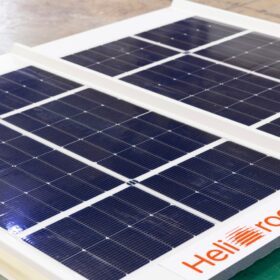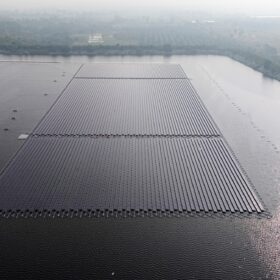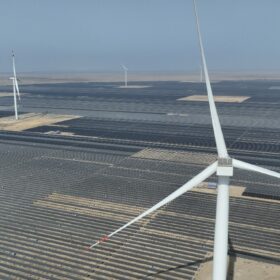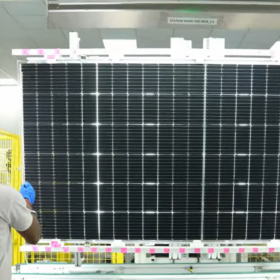Anker Solix unveils C2000 Gen 2 portable power station with 2 kWh
Anker Solix has introduced the 2 kWh C2000 Gen 2 portable power station, featuring faster dual-input charging, lithium iron phosphate batteries, and an idle power draw below 10 W.
Solis unveils 75–125 kW hybdrid inverter for C&I solar
The Chinese manufacturer said its new inverters can deliver 160% overload for 200 ms in off-grid mode, ensuring stable startup of heavy loads. The IP66-rated products feature a maximum efficiency of 97.6% and a European efficiency of 97.2%.
Copper demand to rise 24% by 2035, says Wood Mackenzie
Demand for copper, often considered as one of the most valuable alternatives to silver in solar manufacturing, is expected to increase by almost a quarter globally by the middle of next decade. Wood Mackenzie says the energy transition is one of four ‘disruptors’ that could cause demand to increase further.
COP30: What’s at stake for carbon markets
Carbon markets operate on trust: stakeholders must believe that the emission reductions credited are real, measurable, and permanent. Inconsistent methodologies, poorly monitored projects, and a lack of transparency have undermined confidence in certain markets. As discussions advance at COP30 in Belém, establishing universally accepted standards and accountability frameworks will be essential.
Vertical floating PV plant comes online in Germany
Sinn Power has deployed a 1.8 MW vertical solar array on a quarry lake in the Bavarian municipality of Gilching. The company highlights the ecological benefits of the vertical system configuration and, perhaps surprisingly, its high resistance to storms.
ArcelorMittal starts BIPV module production in France
ArcelorMittal has started producing its Helioroof building-integrated PV modules in France. The steelmaker says the system aims to simplify energy retrofits for commercial and industrial roofs.
Ciel & Terre unveils new honeycomb structure for floating PV
The new Fusio floating structure features a triangular design and is said to be particularly suited to markets such as India and Southeast Asia. Tilt angles can be configured at either 5° or 12°.
Will China’s export curbs on lithium battery materials and technologies reshape global supply chain?
Industry players speak to pv magazine about whether China’s decision to tighten export controls on key minerals and technologies for lithium batteries will cause a short-term disruption or lead to a long-term strategic realignment of the global supply chain.
Engie, Masdar win 1.5 GW solar project in UAE
A consortium of France’s Engie and the UAE’s Masdar has been selected to develop the 1.5 GW Khazna solar PV project located near Abu Dhabi. The project is expected to reach financial close before the end of the year.
OCI Holdings acquires 65% stake in 2.7 GW Vietnamese solar wafer factory
South Korea’s OCI Holdings is entering the solar wafer business with a majority stake in a wafer plant in Vietnam valued at $120 million. The facility will produce solar wafers for the U.S. market.















